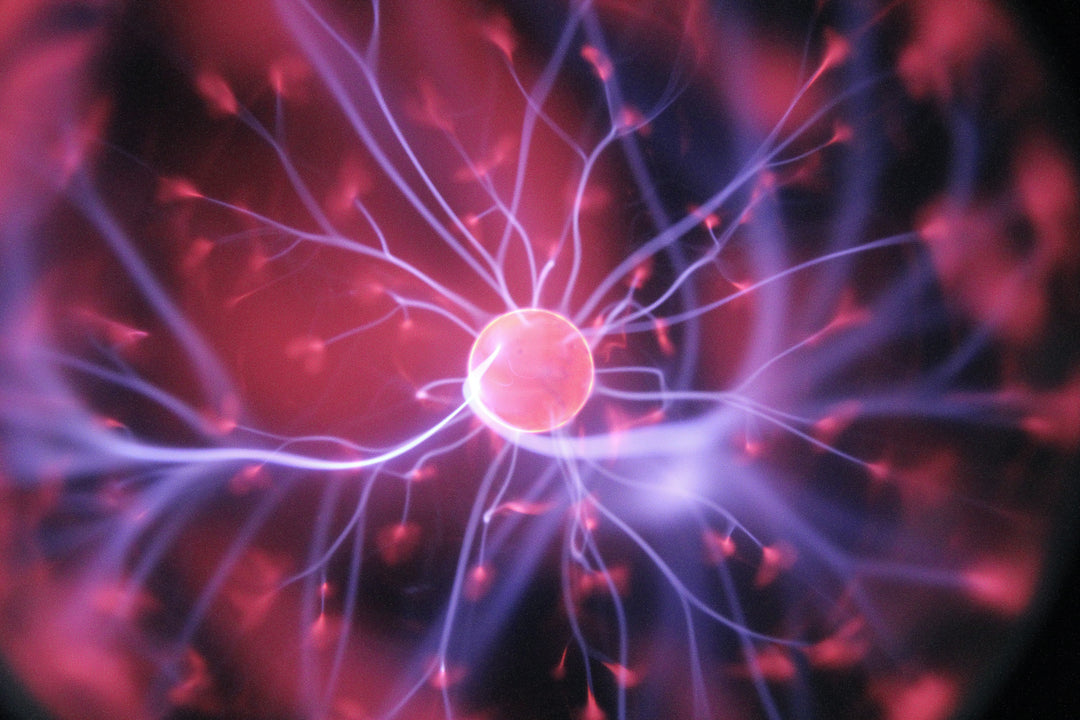Ginger: The Magic Drug

Family name: Zingiberaceae family
Part used: Rhizome
Ginger, often referred to as "the universal medicine" in Ayurveda, holds a special place in our hearts and history. This unassuming rhizome, with its soft yellow appearance, has been celebrated for millennia. Ancient Chinese emperors cultivated vast ginger fields, reaping immense fortunes. It has left its mark in literature, from Shakespearean prose to Indian proverbs. Philosophers like Confucius extolled its virtues, and explorers like Marco Polo and Vasco de Gama meticulously recorded its cultivation.
Ginger's enduring allure continues to captivate both ancient Ayurvedic wisdom and modern science, making it a treasured herb not just for culinary use but also for its remarkable medicinal potential. Its pleasing aroma and diverse biological and pharmacological properties have made ginger a vital component of traditional Chinese, Ayurvedic, and Unani medicine for centuries.
The Ayurvedic Tapestry of Ginger
- Taste (Rasa): It carries a pungent kick.
- Qualities (Guna): Ginger is both heavy and dry, a paradox of sorts. It's also known for its strong, piercing nature.
- Transformation (Vipaka): After digestion, ginger transforms from pungent to sweet.
- Potency (Veerya): With its hot nature, ginger brings the heat.
- Balancing Act: Ginger has the remarkable ability to balance the Tridosha, the three fundamental principles in Ayurveda governing bodily functions.
Ancient Verses on Ginger
- Charak Samhita: It highlights ginger's Snehan (unctuousness), Deepana (appetiser), Vrishya (aphrodisiac) properties. It also falls under category of Truptighna (which relieves pseudo-satiation) and Arshoghna (herbs which are good for piles).
- Sushrut Samhita: It tells ginger's pacifying effects on Vata and Kapha, improvement of voice, relief from constipation, and its usefulness in managing gas, bloating, and abdominal pain.
- Kaideva Nighantu: Ginger has a Katu (pungent) taste and Ushna (hot) potency, aids in digestion, soothes cough, asthma, and digestive issues.
- Raj Nighantu: Ginger is effective for inflammation and throat-related conditions.
- Bhavaprakasha Nighantu: Ginger, consumed with salt before meals, enhances digestion and purifies the throat, used in various conditions, from skin issues to fever, but should be avoided in inflammatory situations.
- Sharangadhara Samhita: A preparation of ginger with jaggery and sesame is used for managing abdominal pain and rheumatic disorders.
- Dhanvanthari Nighantu: Ginger has Snigdha (unctuous) and Ushna (hot) properties, along with Vrishya (aphrodisiac) qualities.
- Madanapala Nighantu: Ginger is described as Ruchya (appetising) and Amavathagni (digestive fire enhancer).
Ginger's Many Faces- Synonyms
Ginger goes by a kaleidoscope of names in Ayurveda, each revealing a facet of its character-
- Ushana (The Fire-starter): Ginger's fiery nature ignites the digestive flames within.
- Katugranthi & Katubhadra (The Pungent Guardians): It's the gatekeeper of pungent flavours.
- Shunti (Balancing Kapha and Vata): Ginger steps in to restore harmony when Kapha and Vata go awry.
- Ardhraka (The Elixir of Liberation): In ancient belief, it's the catalyst for spiritual salvation.
- Nagara (The Best of Pungent Flavours): Originating from Nagar Pradesh, it reigns supreme among pungent tastes.
- Visha (The Swift Assimilator): Like poison (visha), ginger is swiftly assimilated by the body.
- Shrungavera (The Provocateur): Ginger's spiciness tantalises the taste buds.
- Avaakchthr & Ahichathr (The Transformative Leaves): Its leaves bend like an umbrella (chatra) and take on a serpentine appearance.
- Katuviddi (The Pungent Healer): Loaded with the spicy essence of katu (pungent) rasa.
- Katugranthi (The Knotty Wonder): With its nodes and internodes, ginger keeps things intriguing.
- Kaphari & Shoshana (The Drying Duo): It's the moisture-absorbing specialist, thriving in Anupa (damp places).
Unveiling Ginger's Chemical Secrets
Ginger's magic is more than just skin-deep, with a complex chemical composition that includes a wealth of compounds: α-Curcumene, β-D-Curcumene, β-Bourbonene, δ-Borneal, Citral, D-Camphene, Citronellol, Geraniol, Gingerol, α-Zingiberene, β-Zingiberene, Zingiberol, Zingerone, Gingerols, Paradol, Gingerone A, Ginger Glycolipids (A, B, and C), Gingerdiol, Gingerone B, and Gingerone C.
Ginger's Marvels: A Spice of Life
- Digestive Dynamo: Ginger aids digestion, balances doshas, and soothes coughs, colds, and aches.
- Sore Throat Relief: It perks up taste buds, eases sore throats, and boosts metabolism.
- Heart-Healthy Hero: Ginger fights free radicals, and supports heart health.
- Traveler's Ally: Prevent motion sickness with ginger tea's nausea-fighting prowess.
- External Charms: Ginger tackles excess oil and skin infections, making it a potent acne remedy.
- Hair Care Extraordinaire: Combats hair loss and promotes growth.
- Aphrodisiac Magic: Ginger enhances sexual performance by boosting testosterone levels and igniting desire, making it a natural aphrodisiac.
- Managing Menstrual Pain: Ginger provides relief during menstruation by acting as an antispasmodic, relaxing uterine muscles, and as an analgesic, helping in menstrual pain.
Dry Ginger v/s Wet Ginger
| Characteristic | Wet Ginger (Shunthi) | Fresh Ginger (Adraka) |
|
Taste |
Pungent (Katu) | Pungent (Katu) and slightly Astringent (Kashaya) |
| Potency | More Hot (Ushna) than fresh | Hot (Ushna) |
| Quality | Heavy (Guru) and Oily (Snigdha) | Dry (Ruksha) and Light (Laghu) |
| Post Digestion Effect | Sweet (Madhura) | Sweet (Madhura) |
|
Effects on Doshas
|
Balances Vata and Kapha, increases Pitta |
Aggravates Vata and balances Pitta |
|
Ayurvedic Actions |
Digestive stimulant, anti-inflammatory, recommended in IBS, helps relieve cold, cough and improves circulation |
Digestive stimulant, anti-inflammatory, carminative, helps with nausea, indigestion, and menstrual pain, loosens stool and helps in constipation |
Ginger's Healing Powers Unleashed
- Headache Relief: Craft a soothing ginger paste by blending dry ginger with water and apply it to your forehead for a natural remedy against headaches.
- Bowel Harmony: Ginger, when taken with hot water, helps restore balance to the digestive system, making it an foe for irritable bowel disease.
- Indigestion Elixir: Bid adieu to indigestion with a comforting decoction of dry ginger and rock salt.
- Jaundice Support: Dry ginger powder and jaggery, consumed twice daily, aids in liver health and encourages smooth passage of stool.
- Diarrhea Deterrent: Put an end to diarrhea by boiling dry ginger and khus khus roots, taking it thrice daily.
- Cholera Control: Face cholera head-on by infusing dry ginger powder into a decoction of ball fruit flesh.
- Piles Pleaser: Ease piles discomfort by indulging in small balls made from dry ginger and jaggery.
- Colicky Comfort: Relieve colicky pain with a comforting mixture of dry ginger, sesame seeds, and jaggery, with a glass of milk.
- Asthma and Flu Aid: Enhance the power of ginger tea by adding a few cloves of garlic for extra asthma-fighting prowess. You can also apply ginger and mustard oil blend to the chest to ease congestion. It also provides relief in cold, cough, and flu.
- Earache Eraser: Warm a few drops of ginger juice and apply them gently to your ear for earache relief and to clear infections.
- Joint Nourishment: Begin your day with a soothing decoction of dry ginger and caster roots to lubricate joints and ease joint discomfort.
- Stopping Urinary Bleeding: Halt urinary bleeding by boiling a small piece of dry ginger in a glass of milk and drinking it twice a day.
- Allergic Rash Remedy: Crush old jaggery into ginger juice and consume it twice a day to manage allergic rashes.
- Hiccup Halt: When hiccups strike, combine jaggery and ginger juice, then instil a few drops into your nostrils for relief.
- Heart Health: Promote heart health by sipping on a hot decoction of dry ginger every morning.
- Toothache Tamer: Ease toothaches by applying ginger paste to the outside of your cheek at the point of pain.
- Sting Soother: For insect stings, create a soothing paste by mixing dry ginger paste with yogurt to reduce swelling.
- Scrotal Serenity: Find relief from scrotal pain and swelling by applying a mixture of dry ginger and salt solution to hydroceles.
- Managing Morning Sickness: Chew a piece of ginger with added rock salt (sendha namak) to control morning sickness during pregnancy.
- Pamper Pain: Boil crushed ginger in 2 cups of water, strain, and use this ginger tea, optionally sweetened with honey, for effective relief in menstrual pain, joint pain, by consuming it 2-3 times daily.
- Obesity, High Cholesterol and Blood Sugar Level Regulator: Ginger tea can be consumed daily.
How to Take a Ginger Bath
Combine 1/4 cup powdered ginger and 1/4 cup baking soda. Add to a warm bath. Soak, breathe, and savour.
The aromatics of the ginger will help open the lungs, increase circulation, and stimulate warmth. A perfect remedy for whatever ails you in the waning days of winters.
Precautions
- Avoid fresh ginger if you have skin problems, anaemia, painful urination, bleeding issues, wounds, fever, or burning sensations.
- It can worsen gastritis in sensitive stomachs.
- Best to skip during hot seasons (summer and autumn).
- Generally safe for pregnancy, lactation, and children but should be taken in moderation and under qualified practitioner's supervision.
- Enjoy ginger's benefits but beware of excess, which may lead to bloating and acidity.
Always consult a healthcare professional before using ginger, especially with specific health concerns or medical conditions.
SHOP NATURAL GINGER POWDER
SHOP GINGER OIL
REFERENCES:
- https://kripalu.org/resources/healing-properties-ginger-and-3-ways-use-it
- Drs. David Frawley and Vasant Lad, The Yoga of Herbs: an Ayurvedic Guide to Herbal Medicine , 2nd ed. (Twin Lakes: Lotus Press, 2001), 122.
- Sebastian Pole, Ayurvedic Medicine: The Principles of Traditional Practice (London: Singing Dragon, 2013), 183.
- Charaka suthrastanan chapter 27th..
- Charaka chikitsasthan Chapter 21st .
- https://www.easyayurveda.com/
Published By Rasayana Limited. All Rights Reserved. No part of this publication may be reproduced or transmitted in any form or by any means, electronic or mechanical, including photocopying, recording, or any information storage and retrieval system, without permission in writing from the publisher.
Author: Dr. Monika MittalEditor: Taahira Om Kisna







